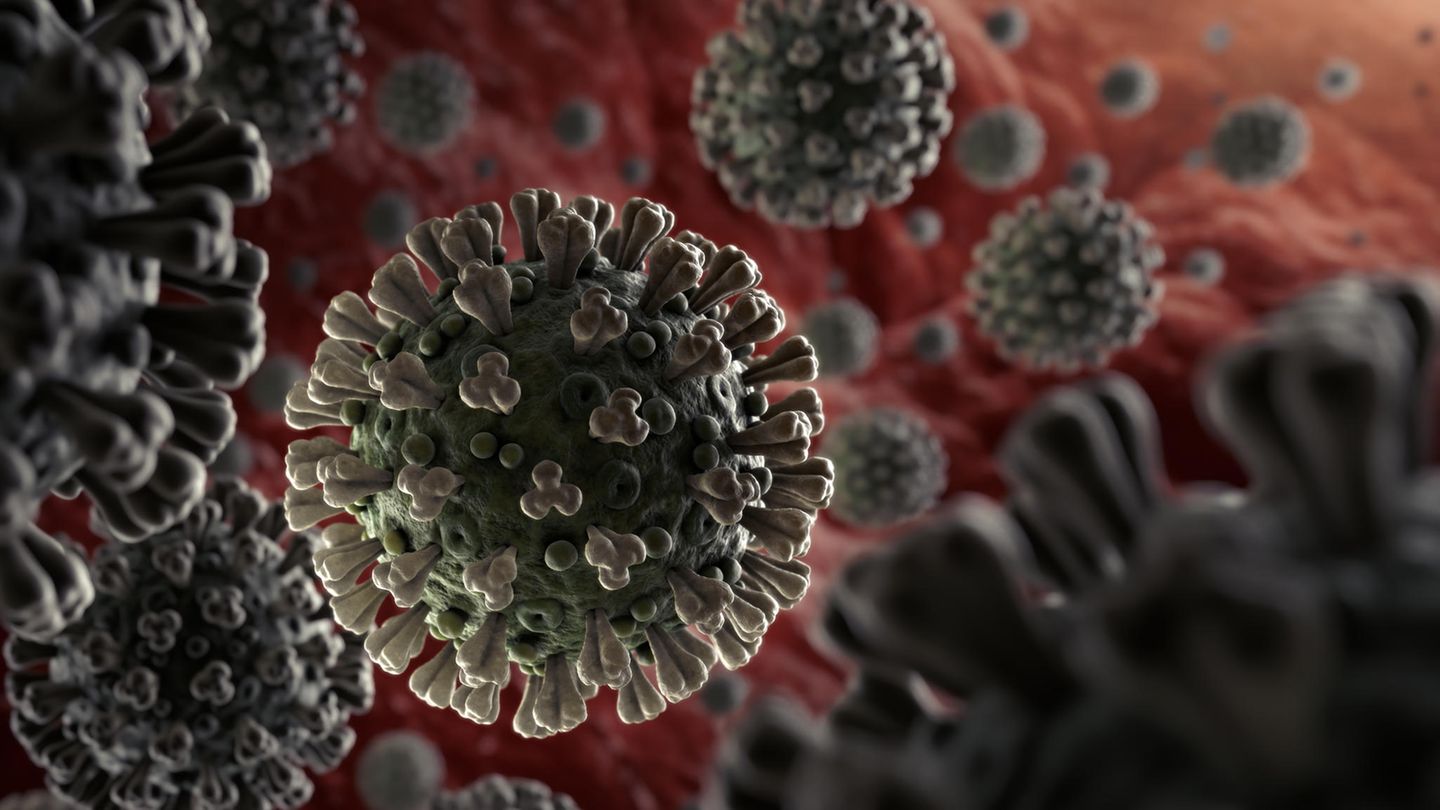Whether someone is seriously ill with Covid-19 or not depends largely on the stress reaction of the cells and the subsequent domino effect. A team of researchers has now examined this process and tested possible therapeutic approaches.
Corona infection does not go according to scheme F. For some, Sars-CoV-2 only causes mild symptoms, while others become so seriously ill that they subsequently have to be ventilated invasively or even die. In short: an infection alone does not lead to a severe course. Many factors play a role such as age, previous illnesses, even gender. And most importantly: a derailed immune system in which vast amounts of inflammatory messenger substances are produced.
A research team has now taken a closer look at this mechanism in a study that was published in the specialist journal “”. Accordingly, Sars-CoV-2 causes cells to age prematurely, which then triggers a chain reaction that ultimately leads to the lung damage that is typical for Covid-19. A process that could possibly be mitigated with the right therapeutic approach.
Premature cell aging
Humans are exposed to a natural aging process. This also applies to the cells. When these age and no longer work properly, i.e. – to put it bluntly – become decrepit, the body sends them into a kind of retirement. The cells don’t die, but they stop dividing. With this tissue protection program, which starts in the event of stress and impending damage, the body protects itself. Ultimately, this prevents potentially harmful cells from multiplying. In the professional world, this process is called senescence.
Part of this body’s own protection program is also that the senescent cells release messenger substances that are important for processes such as wound healing. However, if these messenger substances are produced in large quantities or permanently, this can be harmful and promote age-related diseases such as diabetes – but also lead to severe courses of Covid-19.
Senescence leads to severe courses of Covid-19
Because viral infections can also trigger senescence. And in the case of an infection with Sars-CoV-2, this process, according to the study, contributes significantly to an avalanche-like inflammation cascade, at the end of which is typical Covid-19 pneumonia. This inflammatory reaction therefore begins in the upper respiratory tract. If the coronavirus penetrates the cells of the mucous membrane there, the cells become “stressed”. In response, they reel off their senescence program. So they stop dividing and produce inflammatory messenger substances in large quantities. These messenger substances in turn attract macrophages, so-called phagocytes. These immune cells are responsible for cleaning up the body, eliminating senescent cells or “eating them up”.
Once the phagocytes have done their work, the messenger substances ensure that they too are put into a senescent state. And so a chain reaction starts, they too then release large amounts of inflammatory messengers. But not only that. Because the immune cells can get into the lungs and there drive other cells into senescence. This also includes the endothelial cells that line the blood vessels in the lungs. And then it gets really uncomfortable. Because as a result, the blood vessel cells release blood-clumping substances, among other things. Microthromboses develop and the exchange of oxygen in the lungs is significantly impeded.
Therapy approach: targeting senescent cells
“Apparently, the cellular stress program of senescence is a very important driver of an inflammatory storm that causes a large number of characteristic features of Covid-19 pneumonia, such as vascular damage or microthrombosis,” explains Soyoung Lee, first author of the study, in the one from this observation The resulting question that the research team then asked itself was whether an early attack by the senescent cells could alleviate the course of the disease.
This was tested in an animal model using four active ingredients that specifically attack senescent cells. Two of these senolytics are already used or tested for cancer treatment. All four substances – some alone, some in combination – were able to normalize the inflammatory storm and reduce lung damage to varying degrees in hamsters and mice. After evaluating the data, the research team also included data from two smaller, already completed clinical studies, it indicated that one of the active ingredients could also reduce the likelihood of a severe course of Covid-19 in humans. If this is confirmed, it could result in a new therapeutic approach.

“In our opinion, interrupting this inflammatory overreaction early with specific active ingredients has great potential to become a new strategy for the treatment of Covid-19,” says Clemens Schmitt, Director of the Molecular Cancer Research Center (MKFZ) at the Charité in Berlin. The results from the study are “very encouraging”. A number of questions, such as possible side effects and the dosage, have yet to be clarified. Schmitt: “This requires further clinical studies, some of which various institutions around the world have already set up.”




